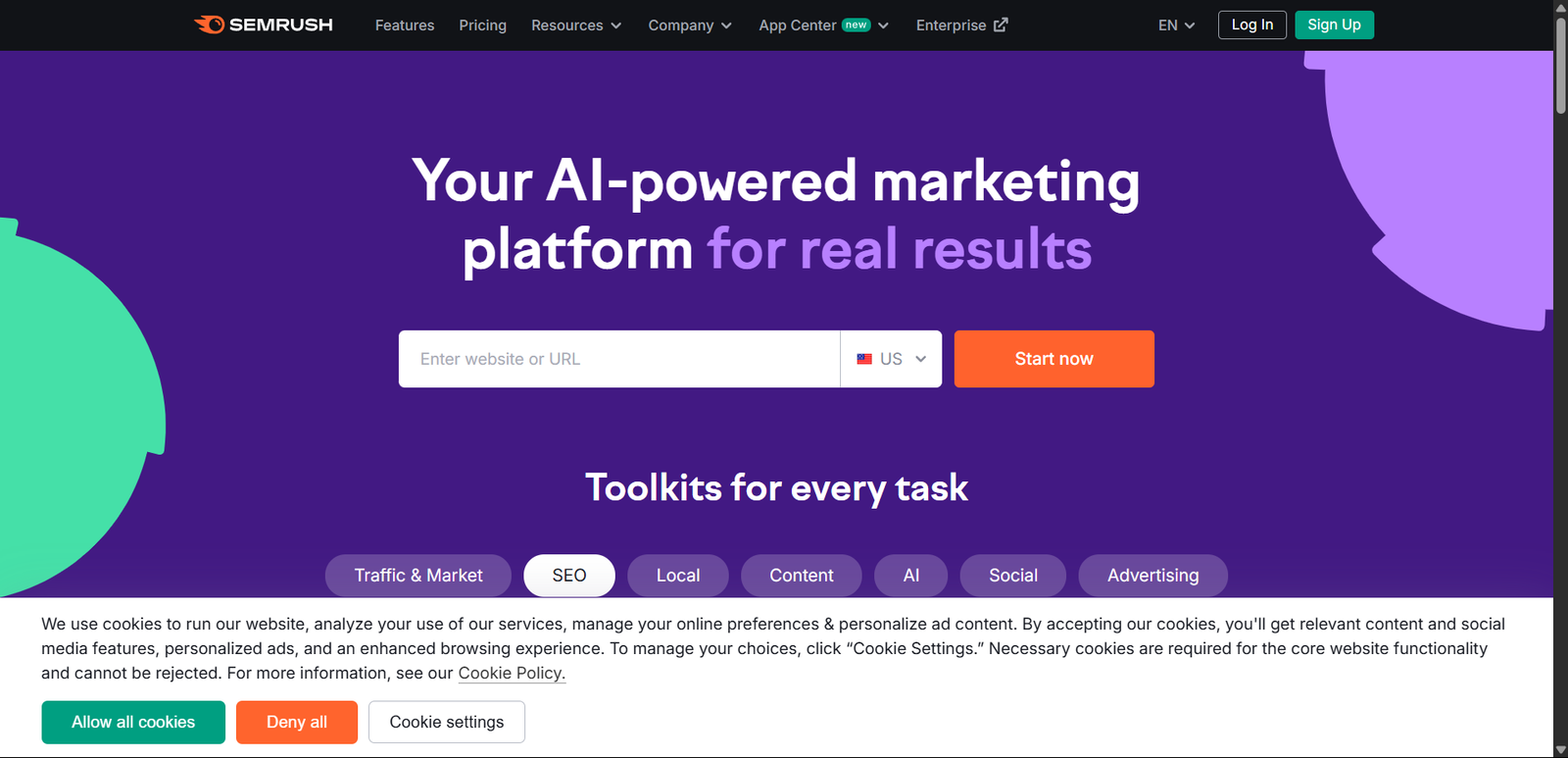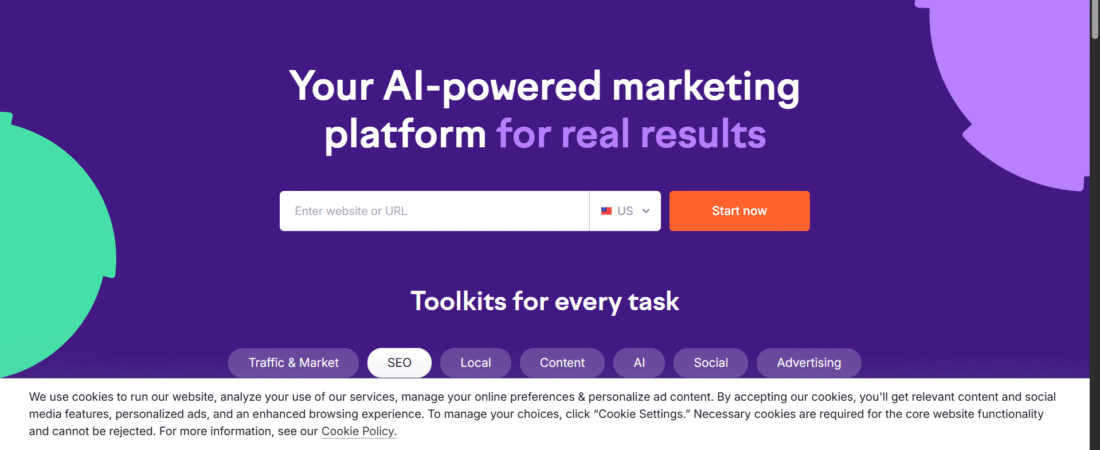
Top 7 AI-Powered SaaS Tools of 2025 – Transforming How Businesses Work
Introduction: Why AI SaaS Tools Are Game-Changers in 2025
I’ve spent the last several months testing dozens of AI-powered SaaS tools to see which ones deliver results and which are just hype. By 2025, AI is no longer just “cool tech”; it’s become an integral part of how we work, create, and run businesses.
But here’s the problem: there are too many options. Every other day, I’d see a new AI tool promising to revolutionize productivity, marketing, or content creation. When I tried them, half didn’t live up to their claims.
That’s why I decided to run my hands-on tests. I signed up, used these platforms daily, compared them with alternatives, and took notes on where they shine (and where they fall short). This article is my breakdown of the Top 7 AI SaaS tools I tested in 2025.
If you’re looking for real user insights, pricing breakdowns, pros & cons, and comparisons, you’re in the right place.
Quick Summary of My Testing Process
Before diving into each tool, here’s how I tested them:
-
Daily Usage: I used each platform for at least a week, integrating it into my workflow.
-
Tasks Completed: From writing content to building websites to creating visuals, I tested practical, real-world scenarios.
-
Alternatives Compared: For every tool, I tested 2–3 competitors so I could give you an honest comparison.
-
Focus Areas: Features, ease of use, pricing, scalability, and value for money.
Now, let’s dive into the first tool.
1. Jasper AI – My Hands-On Content Writing Test
I’ve known about Jasper for a while, but I wanted to see if it was still the leader in AI content writing in 2025. Spoiler: it still impresses me.
Features I Tried
I used Jasper for:
-
Writing long-form blog posts (like this one).
-
Generating marketing copy for landing pages.
-
Creating ad headlines and email sequences.
-
Brainstorming content ideas.
What stood out to me was Jasper’s “Brand Voice” feature. I uploaded some of my existing writing, and within seconds, Jasper learned my tone. When I asked it to draft a blog intro, it sounded eerily close to how I write.
Pros & Cons from My Experience
Pros:
-
Extremely versatile (blogging, ads, emails).
-
The “Brand Voice” makes it feel personal.
-
Integrates with Surfer SEO, which is a game-changer for content optimization.
-
Great templates that save time for short-form copy.
Cons:
-
It’s pricey compared to alternatives.
-
The learning curve was slightly steep for me at first.
-
Sometimes the outputs still need heavy editing.
Pricing Breakdown
Jasper AI isn’t cheap.
-
Creator Plan: $39/month (good for individuals).
-
Teams Plan: $99/month (best for small teams).
-
Business Plan: Custom pricing.
If you’re a freelancer or solo creator, the price can sting, but if you’re churning out content regularly, it’s worth it.
Alternatives I Compared
I tested Jasper against:
-
Copy.ai – Easier to use, but felt less powerful for long-form content.
-
Writesonic – Cheaper and pretty good, but Jasper’s “Brand Voice” kept me hooked.
📌 My Verdict on Jasper: If you want high-quality, brand-consistent writing, Jasper is still the king. But if you’re on a tight budget, Writesonic might be better.
2. Hostinger with AI Website Builder – My Website Launch in 30 Minutes
I’ve built dozens of websites over the years, and honestly, it usually takes me hours (sometimes days). But with Hostinger’s new AI-powered website builder, I launched a functional site in just 30 minutes.
Features I Tested
Here’s how it worked for me:
-
I answered a few questions about my business.
-
The AI generated a full website template, complete with copy and images.
-
I customized the design and had a live website in under an hour.
The cool part? The built-in AI SEO assistant suggested keywords and meta tags while I built the site.
Pros & Cons
Pros:
-
Fastest website setup I’ve ever done.
-
AI-generated copy saves time.
-
Hosting is reliable (since it’s Hostinger).
-
Affordable compared to other website builders.
Cons:
-
Limited design flexibility vs. WordPress.
-
Some AI-generated text felt generic.
Pricing Plans
Hostinger’s AI builder comes bundled with their hosting:
-
Premium Plan: $2.99/month.
-
Business Plan: $3.99/month.
Way cheaper than Wix or Squarespace.
Competitors I Compared
-
Wix AI Builder – More design flexibility, but slower to use.
-
Framer AI – Gorgeous designs, but pricier and less beginner-friendly.
📌 My Verdict on Hostinger AI Builder: If you want a professional website fast without breaking the bank, Hostinger is unbeatable.
3. Notion AI – Boosting My Productivity
I’ve been using Notion for years as my second brain, but when Notion AI came out, I was skeptical. Could it save me time beyond what I already had set up? After a few weeks of testing, the answer is yes, at least for certain tasks.
How I Used It for Note-Taking & Project Management
I mainly tested Notion AI in three scenarios:
-
Summarizing long meeting notes.
-
Generating task lists from my brainstorming sessions.
-
Drafting quick content outlines inside my Notion workspace.
The summarization feature blew me away. Instead of re-reading pages of messy meeting notes, I hit “Summarize” and instantly got a clean, bullet-point version.
Strengths & Weaknesses
Strengths:
-
Seamlessly built into Notion’s existing ecosystem.
-
Summarization and brainstorming are huge time savers.
-
Helps with idea generation when I’m stuck.
Weaknesses:
-
Sometimes too generic, especially for creative writing.
-
Doesn’t replace deep project management tools like ClickUp.
Pricing
Notion AI is an add-on:
- $10/month per user.If you’re already paying for Notion, this feels like a reasonable upgrade.
Alternatives I Tested
-
ClickUp AI – More powerful for project management, but more complex.
-
Coda AI – Flexible, but I found the learning curve higher.
📌 My Verdict on Notion AI: If you already live in Notion like I do, this is a no-brainer upgrade. It won’t replace deep AI writing tools, but for productivity? It’s gold.
4. Grammarly – My AI Writing Assistant Test
I’ve used Grammarly for years to polish my writing. When they introduced Grammarly, I was curious: would it just be another ChatGPT clone inside Grammarly? After using it, I can say it’s smarter than I expected.
Features in Action
I tested Grammarly by rewriting emails, expanding blog paragraphs, and adjusting tone. The tone control slider was especially useful. For example, I drafted a formal outreach email, then instantly made it sound friendlier with a single click.
My Pros & Cons
Pros:
-
Tone adjustments feel natural, not robotic.
-
Works across apps (Gmail, Google Docs, Word).
-
Quick fixes for rewriting sentences.
Cons:
-
Not as creative as Jasper or ChatGPT.
-
Limited customization for brand-specific writing.
Pricing
-
Free tier with limited suggestions.
-
Premium plan: $12/month.
Alternatives I Compared
-
QuillBot AI – Great for paraphrasing, but weaker in tone adjustments.
-
ProWritingAid – More in-depth grammar checks, but slower.
📌 My Verdict on Grammarly: Perfect if you want polished, on-the-fly writing improvements. I still rely on Jasper for big content projects, but Grammarly is now my go-to for daily emails.
5. Descript – AI for Podcasting & Video Editing
I create video content, and editing has always been the most painful part. Descript flipped that on its head.
My Workflow with Descript
I uploaded a podcast recording, and Descript generated an automatic transcript. Editing was as easy as editing text, deleting a sentence in the transcript, and it cut the audio perfectly.
I also tried the Overdub feature, which let me clone my voice. I fixed small mistakes in my recording without re-recording. That felt like magic.
Benefits & Downsides
Benefits:
-
Editing by text saves hours.
-
Screen recording + editing built-in.
-
Voice cloning is insanely accurate.
Downsides:
-
Heavy on system resources (slowed my laptop a bit).
-
Best for simple edits, not advanced cinematic videos.
Pricing
-
Free plan with limitations.
-
Creator Plan: $12/month.
-
Pro Plan: $24/month.
Competitors I Tried
-
Riverside – Better for live recording, but weaker editing.
-
Veed.io – More polished templates, but a slower editing process.
📌 My Verdict on Descript: If you create podcasts or training videos, this is a must-have. I’ve cut my editing time in half.
6. MidJourney – My Experience Creating AI Visuals
I’ve always struggled with visuals for blog posts and social media. MidJourney has solved that problem for me.
What I Generated
I asked MidJourney to create images for blog headers, social posts, and even mock product photos. The quality shocked me, it often looked like a professional designer made it.
Strengths & Weaknesses
Strengths:
-
Stunning, artistic visuals.
-
Great for marketing assets.
-
Strong community support on Discord.
Weaknesses:
-
Runs inside Discord (awkward to use at first).
-
Sometimes unpredictable results.
Pricing
-
Basic Plan: $10/month.
-
Standard Plan: $30/month.
-
Pro Plan: $60/month.
Alternatives I Tested
-
Stable Diffusion – Free but requires technical setup.
-
DALL·E 3 – Easier to use, but less artistic than MidJourney.
📌 My Verdict on MidJourney: If you want beautiful, eye-catching visuals, this is the best AI art tool right now.
7. ChatGPT Enterprise – My Day-to-Day AI Assistant
Finally, I couldn’t leave out the tool I probably use most: ChatGPT Enterprise.
Features I Use Daily
-
Drafting blog outlines (like this article).
-
Brainstorming marketing strategies.
-
Analyzing data and creating reports.
-
Helping me code small scripts.
What makes the Enterprise version different is the unlimited access, higher security, and advanced reasoning power. I noticed it handles complex workflows much better than the free or Plus versions.
My Pros & Cons
Pros:
-
Handles huge projects without crashing.
-
Enterprise-grade security for business use.
-
Faster response times.
Cons:
-
Expensive, definitely not for casual users.
-
Some outputs still require fact-checking.
Pricing
-
Custom pricing, but starts around $30/month per seat for teams.
Competitors I Compared
-
Claude AI – Excellent for long text, but weaker at coding tasks.
-
Gemini – Strong on research, but still catching up on integrations.
📌 My Verdict on ChatGPT Enterprise: For teams and professionals, it’s worth it. For individuals, the regular ChatGPT Plus is usually enough.
FAQs About AI-Powered SaaS Tools
1. Are these tools beginner-friendly?Yes, most are. Tools like Hostinger and Grammarly are extremely beginner-friendly, while Descript and MidJourney take a bit more practice.2. Which AI SaaS tool is best for small businesses?Hostinger (for websites) and Jasper (for content) are the best entry-level investments.3. Are AI tools replacing jobs?From what I’ve seen, they don’t replace jobs but make people faster and more productive.4. Which tool saves the most time daily?For me, Notion AI and Grammarly save the most time because they’re used constantly in daily work.5. What’s the most affordable option?Hostinger’s AI website builder at $2.99/month is the cheapest but still powerful.6. Which tool gives the best ROI?Jasper AI, if you’re creating content regularly, it practically pays for itself.
My Final Verdict: Which Tool Should You Choose in 2025?
After testing all these tools, here’s my recommendation:
-
For content creators: Jasper AI + Grammarly.
-
For small business owners: Hostinger with AI Website Builder.
-
For teams: ChatGPT Enterprise.
-
For creatives: MidJourney + Descript.
-
For productivity junkies: Notion AI.
AI SaaS tools aren’t just hype anymore, they’re real productivity boosters. The key is picking the right one for your needs instead of chasing every new launch.
From my hands-on testing, these seven stood out because they delivered results in real-world scenarios. If you pick even one of them, you’ll save hours of work every week.
